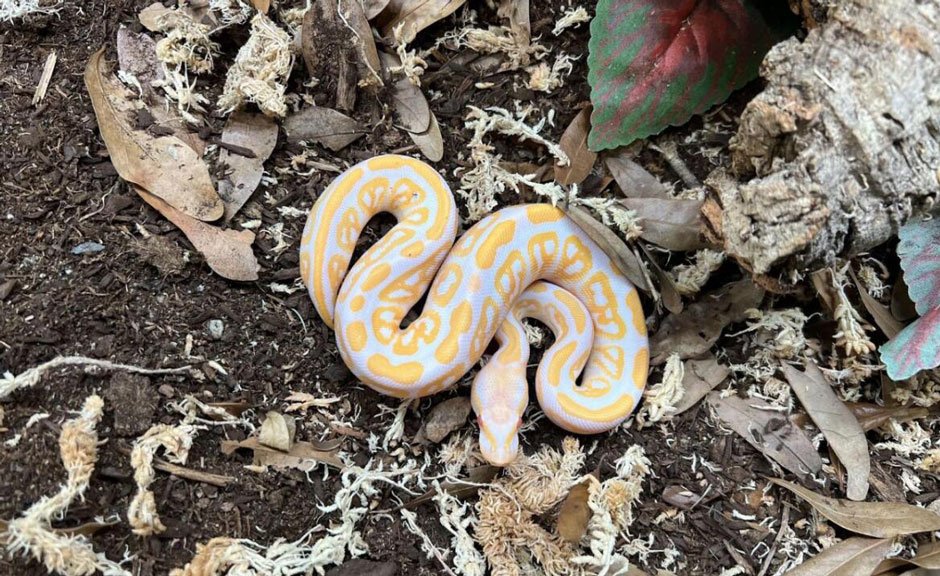3 Small and Easy Pet Snakes for Beginners

Looking to venture into the world of reptiles? Seeking a scaly companion that’s small in size and easy to care for? Look no further than pet snakes! Their long, limbless bodies have evolved for slithering and sliding through various environments. Pet snakes rely on their keen senses and flickering tongues to navigate their surroundings, always on the lookout for prey or potential dangers.
In this guide, we’ll explore three small and beginner-friendly snake species that are sure to captivate your heart. With their delightful personalities and easy care, these snakes make for an enchanting introduction to reptile ownership. So whether you prefer the elegance of corn snakes, the burrowing tendencies of sand boas, or the mesmerizing patterns of ball pythons for sale, we’ve got you covered. Read on to find your new scaly friend!
1. Ball Pythons
Ball pythons, also known as royal pythons, are small and easy-to-handle snakes. Originating from West and Central Africa, they inhabit grasslands, shrublands, and open forests. In addition, ball pythons have a maximum length of 60 inches and a stocky build with smooth scales. Their head is relatively small. Moreover, their body is black or dark brown with light brown and gold blotches on the back and sides. The belly is white or creamy with black markings.
When threatened, ball pythons coil into a tight ball, tucking their head and neck away. They also don’t bite, making them easy to handle. In the wild, they eat small mammals and birds. In the wild Ball pythons consume rodents like Gambian pouched rats, black rats, shaggy rats, and grass mice.
To care for ball pythons, you must provide an appropriate enclosure. This enclosure should have temperature and humidity control. Offer pre-killed rodents as their diet. Additionally, adjust the frequency of feeding based on their age and size. Regularly cleaning their enclosure is also essential for their well-being.
Overall, ball pythons are popular due to their manageable size and docile nature. Plus, their striking appearance and low care requirements make them an excellent choice for snake enthusiasts.
2. Corn Snakes
Corn snakes are known for their stunning colors, gentle temperament, and ease of care. With hues ranging from vivid reds and yellows to lavender and white, corn snakes display a mesmerizing array of colors. These colors and petterns make them visually stunning pets. Plus, their distinct belly patterns often resemble the kernels of wild corn, hence their name.
Their docile nature makes them ideal for beginner snake owners. Corn snakes are generally calm and tolerant, allowing easier handling and interaction. Their gentle temperament makes them less likely to bite or show aggression. This provides a sense of reassurance to those new to snake ownership.
Here’s more you need to know about corn snakes:
- Corn snakes are carnivores and feed on small prey such as mice and rats.
- They are constrictors, meaning they subdue their prey by coiling their bodies around them. In this way, corn snakes suffocate the prey until they can swallow them.
- When it comes to care requirements, corn snakes are relatively low-maintenance pets.
- They require a secure enclosure with proper ventilation and a suitable substrate. Consider aspen shavings for burrowing and nesting.
- A temperature gradient within the enclosure is necessary.
Corn snakes are small reptiles known for their striking patterns reminiscent of corn kernels. Moreover, they offer a captivating pet ownership experience.
3. Sand Boas
Sand boas are small and stout-bodied snakes that make excellent pets for beginners. These fascinating serpents have unique characteristics and manageable care requirements. This, in turn, contributes to their popularity among reptile enthusiasts.
Sand boas are popular for their competence as burrowers. They possess strong bodies designed for navigating through sand and loose soil with ease. With their small eyes and hard, protective scales, they are well adapted to withstand sandy environments.
Unlike some larger snake species, sand boas rarely exceed 30 inches in total length. Regarding diet, they primarily feed on rodents, such as mice and rats. But they have also been known to prey on lizards and birds in their natural habitat.
Regarding care requirements, sand boas need an enclosure that mimics their natural habitat. A secure and adequately sized terrarium is essential. You should also consider a substrate that allows them to burrow. This may be sand or a mixture of sand and soil.
Wrap Up
In conclusion, if you’re a beginner looking for a small and easy-to-handle pet snake, you have three fantastic options to consider. With its docile nature and striking appearance, the ball python makes for a captivating companion. Corn snakes, known for their vibrant colors and gentle temperament, offer a great balance of beauty and ease of care.
And let’s not forget the sand boas, a unique species with their burrowing behavior and relaxed demeanor. So whether you choose corn snakes, sand boas, or ball pythons for sale, each of these snakes can bring fascination and joy into your life as a beginner snake owner.